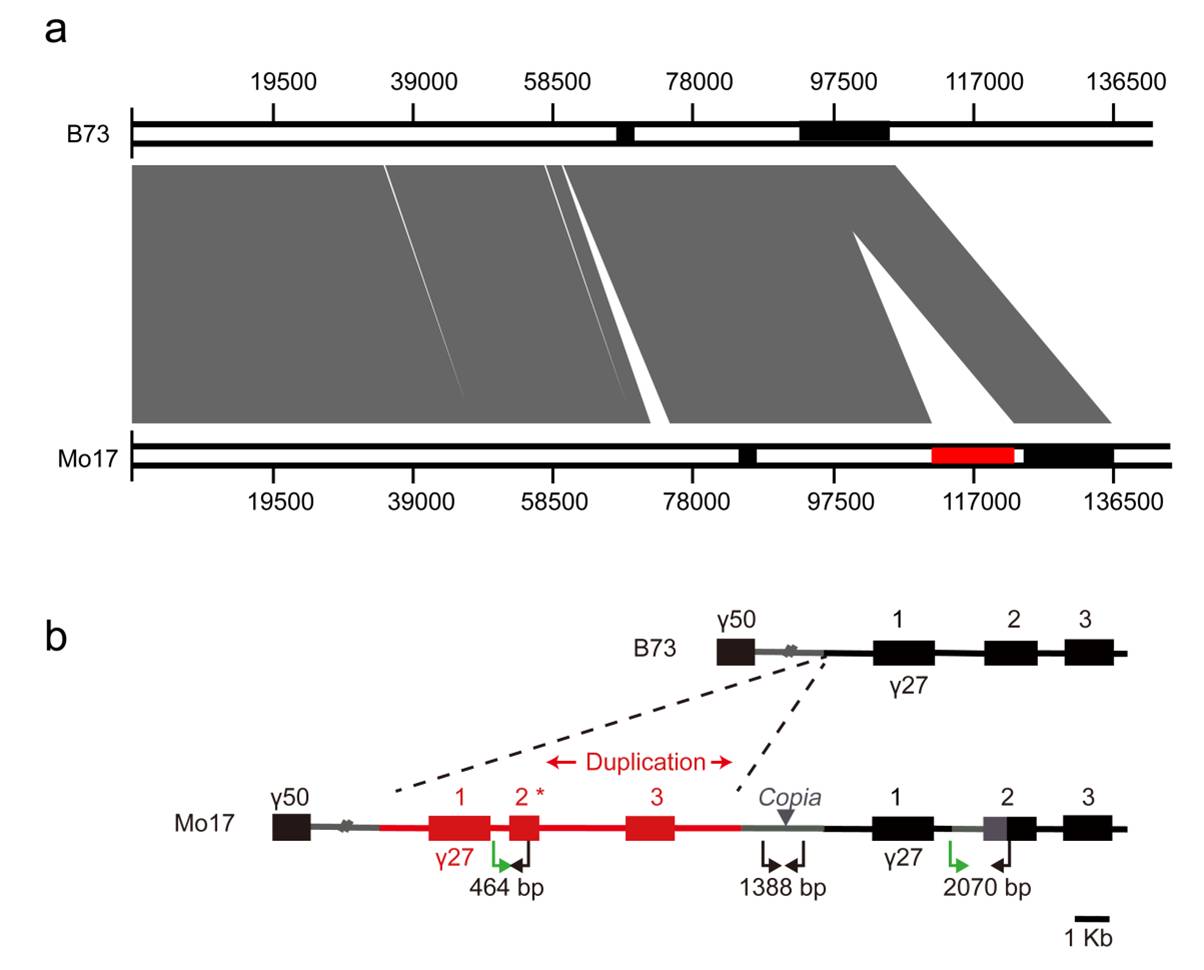Gene duplication confers enhanced expression of 27-kDa γ-zein for endosperm modification in quality protein maize
Quality Protein Maize (QPM) has the potential to benefit millions of people in developing countries who consume maize as their sole protein source. To do this, the scientists have made great efforts to identify the genetic locus or gene responsible for the high amount of lysine in maize endosperm. More than half a century ago, Oliver Nelson and Edwin Mertz at Purdue University found that the maize opaque2 (o2) mutant produces doubling of the endosperm lysine content, suggesting o2 as a potential target gene for QPM breeding. However, breeding such a QPM hybrid based on o2 takes longer than regular hybrids, primarily because of the complex and unknown components of o2-mediated endosperm modification pathway.
Previous studies have shown that enhanced expression of 27-kDa γ-zein in QPM is essential for endosperm modification. Taking advantage of genome-wide association study analysis of a natural population, linkage mapping analysis of a recombinant inbred line population, and map-based cloning, Wu and his colleagues at Institute of Plant Physiology and Ecology (IPPE), Shanghai Institutes for Biological Sciences (SIBS), CAS, identified a quantitative trait locus (qγ27) affecting the expression of 27-kDa γ-zein. qγ27 was mapped to the same region as the major o2 modifier (o2 modifier1) on chromosome 7 near the 27-kDa γ-zein locus. qγ27 resulted from 15.26-kb duplication at the 27-kDa γ-zein locus, which increases the level of gene expression. The elevated level of 27-kDa γ-zein is very critical to facilitate the formation of numerous small protein bodies surrounding the starch granules, which is able to partially rebuild the proteinaceous matrix for restoration of kernel vitreousness in QPM. Thus, these findings not only improve our understanding of genetic variation and artificial selection in maize, but also provide a potential genetic resource for QPM breeding.
The study entitled “Gene duplication confers enhanced expression of 27-kDa γ-zein for endosperm modification in quality protein maize” has been published online in PNAS on Apr 19, 2016. This research was supported by National Natural Science Foundation of China Grants (31371630, 91335109 and 31422040), Chinese Thousand Talents Program Grant and Chinese Academy of Sciences Grant (XDA08020107).
CONTACT:
Yongrui Wu, PhD, Professor
Institute of Plant Physiology & Ecology
Shanghai Institute for Biological Sciences
Chinese Academy of Sciences
300 Fenglin Road
Shanghai 200032, China
+86-21-54924341 (Tel)
Labweb: http://sippe.ac.cn/wyr

Figure. Gene duplication of the 27-kDa γ-zein locus in inbred Mo17. The solid boxes represent genes. Compared to inbred B73, the duplicated region is illustrated in red. Genes 1, 2, 3 and 4 represent the 27-kDa γ-zein gene, GRMZM2G565441, GRMZM2G138976 and GRMZM5G873335, respectively. This duplication causes the elevated expression of 27-kDa γ-zein. (Image by Dr. Wu Yongrui’s lab)
